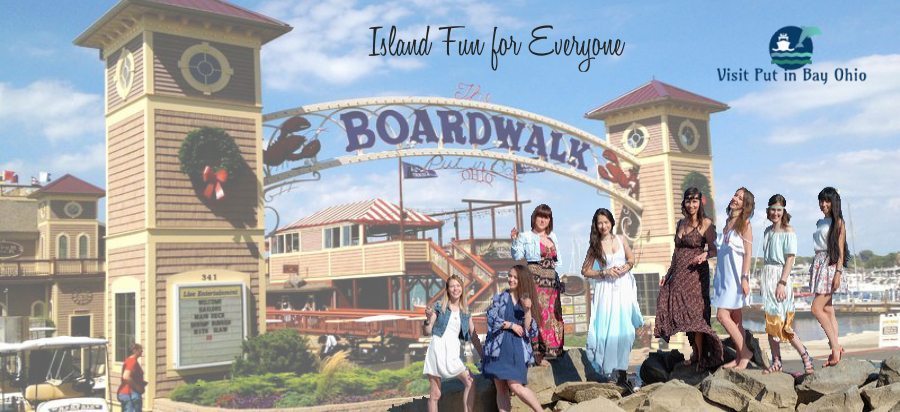Island Wine History 150+ Years Of History
It’s hard to believe, but there was a time on the islands when tourism wasn’t the primary source of income for those who called the islands home, it was island wine. In the early years of settlement, it was the cultivation of vineyards and the production of island wine that earned the islands their first success, resulting in the islands becoming known by the name “The Wine Islands of Lake Erie”.
Each of the Bass Islands had many family-owned vineyards and some operations were smaller and others were quite large, the largest of which was located on Middle Bass. While George Lonz is most often the name people associate with the success of the Vine
with Middle Bass, he wasn’t the founding father. This could actually be considered Andrew Wehrleand. It was he who put Middle
Bass and the neighboring islands on the wine-making map.
Andrew is mostly forgotten now and isn’t given much thought even by those who live on the islands. However, he deserves as much mention as anyone else from our past for helping lay the foundation for what the Wine Islands of Lake Erie would become.
Andrew Wehrle arrived on Middle Bass in 1854, hailing from Germany, as did many of the other early settlers to this area. However, at this time he was working as an agent for Jose DeRivera. He took notice of some of the other islands’ success with grape cultivation and purchased property on Middle Bass in 1859, soon planting a small vineyard too.
Wehrle pressed the first barrel of island wine ever on the island in 1862. He built a wine cellar beneath his house, and several years later, Andrew was producing wine on a much larger scale with a capacity for 5000 gallons of juice.
Island Wine Production Explodes On Middle Bass Island
Wehrle saw there was money to be made in this business, and in 1865 he established the Golden Eagle Wine Cellars. In the early 1870s, he decided to expand and so commenced building a much more extensive cellar along the southern Middle Bass shoreline, one that could house 30,000 gallons of wine, which was quite impressive for the islands at the time.
At some point, Wehrle came in contact with a wealthy businessman named Michael Werk. Werk was from Cincinnati and was involved with the wine industry there, among other things. However, the vineyards along the Ohio River developed black rot or powdery mildew as it is called today, which basically wiped out the grapes there. This disease didn’t seem to have much effect upon the northern part of the state, and by the time it did, there were ways to effectively treat it, so Michael turned his grape-growing interests along the lakeshore.
In 1871, Wehrle took on Werk and his two sons as partners, establishing the firm Wehrle, Werk, and Sons. The following year the group decided to expand their business by building more cellars that could now house 200,000 gallons of native island wine. About this time, the islands were fast becoming a tourist destination, and Andrew went on to build a dance hall with bowling alleys and billiard rooms above the cellars. It was quite an impressive structure surrounded by tall glass windows allowing for wonderful panoramic views of the lake and island.
The outside of the building was decorated with beautiful ornate trim, including a large deck stretching across the front of the building overlooking the lake. Many, many folks came to the Golden Eagle over the years to partake in a refreshing libation as well as to “trip the light fantastic”. Wehrle, Werk, and Sons enjoyed quick success, and more cellars were added by 1880. The operation was by far the largest in Ohio if not the whole country, and some references claim it to have been the largest in the world since at times, they were producing between 700,000 and 800,000 gallons of top-quality island wine.
Andrew Wehrle was a man of industry and didn’t limit himself only to Middle Bass island wine; he also dabbled in other areas of
business among the islands and mainland. He was the president of the Sandusky and Island Steamboat Company. He was also a stockholder in the steamer Arrow and part owner of the steamer American Eagle. He was also a partner in the Put-in-Bay Hotel Company and, for a time, was involved in the ice harvesting business on South Bass Island.
Andrew also helped to establish the American Vinegar Company in Sandusky, the first to make wine vinegar in the States. Although not everything he touched was a total success, he went into business with the former superintendent of Kelley’s Island Wine Co., producing wine under the name Wehrle and Farciot in Sandusky, but it didn’t pay, and the firm went bankrupt in 1884.
Yet it was always the Golden Eagle that continued to be his primary interest. However, by 1884 Werk and his sons’ attitudes toward imbibing in alcohol changed. They developed a distaste for the business and became teetotalers, subsequently selling their half partnership back to Wehrle.
Andrew, in turn, sold their half to his son Herman. The two continued on enjoying success, and reports stated in 1887, the father and son team was producing around 500,000 gallons of wine, and by 1890 it is said all eight wine presses the firm owned carried on night and day pressing 1200 tons of grapes each season. It would take around 400 acres of vineyards to provide that many berries, so likely, he was purchasing grapes from growers across the islands to make island wine.
All good things end, and the same proved true for the Golden Eagle Wine Cellars. Sadly in 1896, Andrew Wehrle passed away, which became a turning point for the winery and, in a way, Middle Bass as well. Herman wasn’t the businessman his father was, and by 1905 the winery was put on the auction block so he could repay his debts.
Of course, the island wine story doesn’t end there, but the chapter of Wehrle’s on Middle Bass does. While George Lonz is probably Middle Bass’s most known figure, it just needed to be said there was more to the island than what “King George” brought to it. After all, there was Andrew Wehrle; without him, there just may never have been what would become the Famous Wine Islands of Lake Erie.
Postscript Werk was pretty interesting himself; in his other business interests in Cincinnati, he was partners with three other men, Procter, Gamble, and Jergan. I need not say more about their success. Procter & Gamble must have kept up with their island connection as they were some of George Lonz’s best customers during prohibition. Today at Put-in-Bay, Heinemans Winery is the sole raming island wine producer on the Bass Islands. Authored by Robin Burris, Lake Erie Historian.



0 Comments